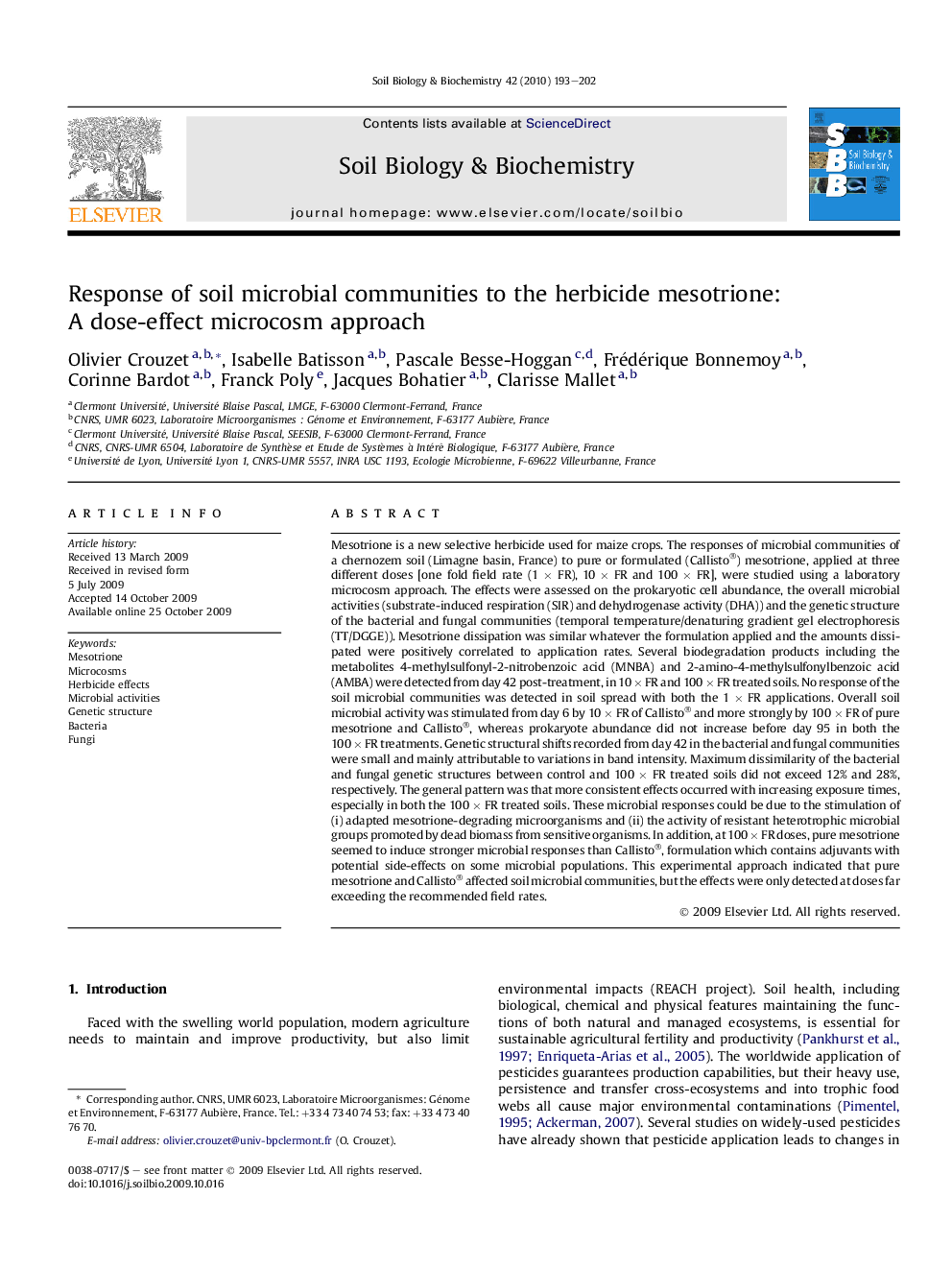| Article ID | Journal | Published Year | Pages | File Type |
|---|---|---|---|---|
| 2025127 | Soil Biology and Biochemistry | 2010 | 10 Pages |
Mesotrione is a new selective herbicide used for maize crops. The responses of microbial communities of a chernozem soil (Limagne basin, France) to pure or formulated (Callisto®) mesotrione, applied at three different doses [one fold field rate (1 × FR), 10 × FR and 100 × FR], were studied using a laboratory microcosm approach. The effects were assessed on the prokaryotic cell abundance, the overall microbial activities (substrate-induced respiration (SIR) and dehydrogenase activity (DHA)) and the genetic structure of the bacterial and fungal communities (temporal temperature/denaturing gradient gel electrophoresis (TT/DGGE)). Mesotrione dissipation was similar whatever the formulation applied and the amounts dissipated were positively correlated to application rates. Several biodegradation products including the metabolites 4-methylsulfonyl-2-nitrobenzoic acid (MNBA) and 2-amino-4-methylsulfonylbenzoic acid (AMBA) were detected from day 42 post-treatment, in 10 × FR and 100 × FR treated soils. No response of the soil microbial communities was detected in soil spread with both the 1 × FR applications. Overall soil microbial activity was stimulated from day 6 by 10 × FR of Callisto® and more strongly by 100 × FR of pure mesotrione and Callisto®, whereas prokaryote abundance did not increase before day 95 in both the 100 × FR treatments. Genetic structural shifts recorded from day 42 in the bacterial and fungal communities were small and mainly attributable to variations in band intensity. Maximum dissimilarity of the bacterial and fungal genetic structures between control and 100 × FR treated soils did not exceed 12% and 28%, respectively. The general pattern was that more consistent effects occurred with increasing exposure times, especially in both the 100 × FR treated soils. These microbial responses could be due to the stimulation of (i) adapted mesotrione-degrading microorganisms and (ii) the activity of resistant heterotrophic microbial groups promoted by dead biomass from sensitive organisms. In addition, at 100 × FR doses, pure mesotrione seemed to induce stronger microbial responses than Callisto®, formulation which contains adjuvants with potential side-effects on some microbial populations. This experimental approach indicated that pure mesotrione and Callisto® affected soil microbial communities, but the effects were only detected at doses far exceeding the recommended field rates.
